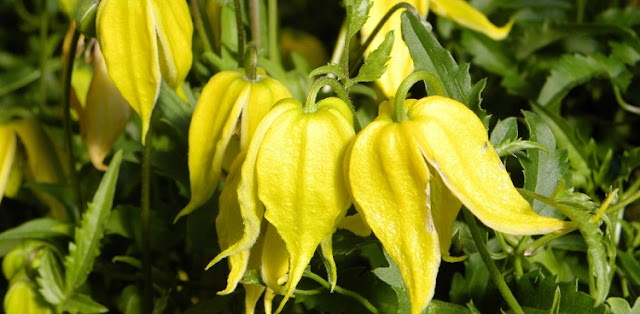 |
| Clematis tangutica |
It was discovered for western science in 1872 by Russian geographer Nikolay Mikhaylovich Przhevalsky (1839–1888), a renowned explorer of Central and East Asia. Collected from the Gansu province (then known as 'Terra Tanguturu' to Europeans) in China only herbarium specimens had made it back to Royal Kew gardens, received from St Petersburg in 1898. It wasn't until 1890 that the first living specimens arrived in the United Kingdom and Clematis tangutica rendered cultivation. The British plant explorer William Purdom (1880–1921) reintroduced the species in 1911. This form was raised at Wisley and the subsequent seeds were widely distributed from 1919 onwards.
 Under favourable conditions you can expect Clematis tangutica to grow to approximately 3 to 5 metres high. It is an easily grown species with attractive divided, sea-green foliage, and slightly downy stems. The flowers are 4-5 cm long, nodding at first and produced on long downy stalks during the autumn. Late blooms arrive at the same time as the first, silky seed heads form.
Under favourable conditions you can expect Clematis tangutica to grow to approximately 3 to 5 metres high. It is an easily grown species with attractive divided, sea-green foliage, and slightly downy stems. The flowers are 4-5 cm long, nodding at first and produced on long downy stalks during the autumn. Late blooms arrive at the same time as the first, silky seed heads form.Clematis tangutica can be grown in full sun to partial shade. Plant with the crown 5-8 cm deep (to encourage new shoots to grow from below ground level) in a moisture-retentive, well-drained soil, preferably with an alkaline or neutral pH. Keep the roots and base of the plant cool and shaded by other plants or a layer of pebbles at the base.
Pruning is relatively easy. The flowers appear on the current year's growth so cut back the stems to a pair of strong buds 15-20 cm above ground level before new growth emerges in early spring.
For related articles click onto the following links:







No comments:
Post a Comment